Frogs are delightful and mysterious creatures that have roamed our planet for hundreds of millions of years. As amphibians, they bridge the gap between aquatic and terrestrial realms.
From quiet ponds to lush rainforests, frogs can survive in nearly every part of the world. With sleek bodies, webbed feet, and powerful senses, they are well-equipped to thrive in a multitude of diverse environments. Some frogs have even developed special ways to protect themselves from predators or give them a leg up against formidable competitors.
Toxin production is a remarkable example of the ways frogs fend for themselves. Many acquire toxins from their diet and are capable of incorporating and storing these potent compounds in their bodies.
When threatened, they secrete these poisons which can have a range of adverse effects on their victims, including paralysis, discomfort, and even death. 1

Within their habitats, frogs play crucial ecological roles. They are predators in and of themselves as avid hunters of insects and other small animals. In the middle of many food chains, they also serve as indicators of an ecosystem’s balance and health.
In the animal kingdom, frogs have truly mastered the use of toxins in their arsenal. Whether it is for defense, predation, or competition, toxins are extremely advantageous in the species that employ them.
Factors such as diet, habitat, and genetics can have an effect on the potency and composition of a frog’s poison. Thus, frogs from different regions will naturally exhibit different levels of toxicity.
While not all frogs are poisonous, it is still important for us to exercise caution in areas that are known to harbor these fascinating organisms. Fortunately, many only use their poisons when confronted and are usually more wary of us than we are of them.
Here are the world’s most poisonous frogs.
10. Strawberry Poison Dart Frog
Weighing in at less than an ounce, the strawberry poison dart frog is tiny, but its poison packs a dangerous punch.

These frogs acquire their poison from a diet rich in Formicidae ants. When ingested, victims can experience convulsions and, if medical attention is not sought, death.
Luckily, these frogs can usually be easily identified by their bright and blue coloration which also serves as a way of attracting potential mates. 2
9. Granular Poison Frog
The granular poison frog resides in forests and wetlands. They are most commonly found in the Pacific lowlands of southern Costa Rica. In 2019, the granular poison frog was listed on the IUCN Red List of threatened species.
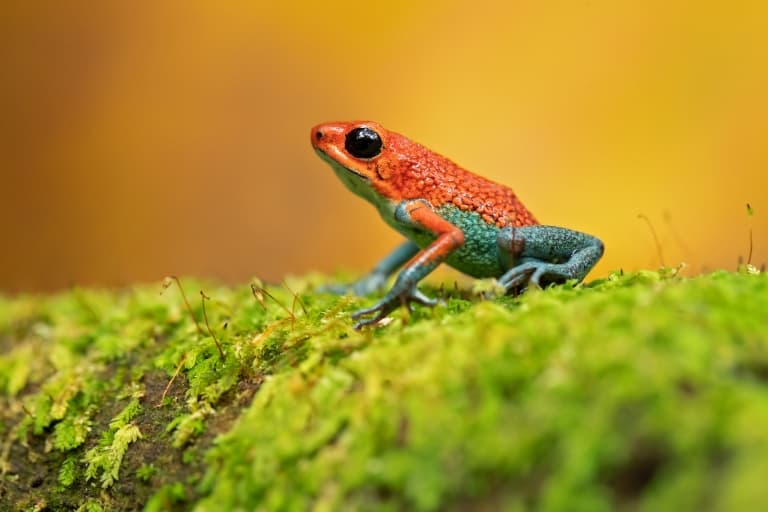
True to their name, these frogs possess granular glands that cover their bodies. From these glands, they secrete noxious chemicals in self defense.
Granular poison frogs are aposematic animals, which means they advertise to potential predators using bright coloration of their toxic qualities.
8. Green and Black Poison Dart Frog
Like many other frog species, the green and black poison dart frog has a sticky retractable tongue that is used to hunt prey. From insects, they extract high amounts of alkaloids that make them poisonous.
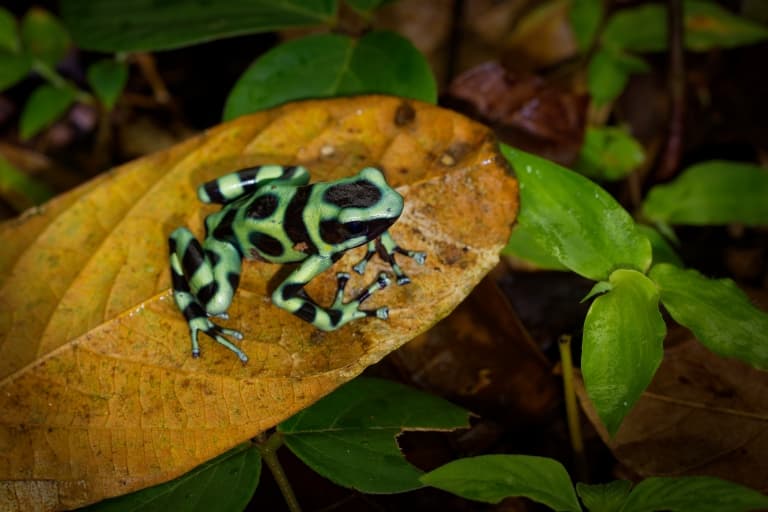
Found in Central and South America, green and black poison dart frogs live on the floor of rainforests. Their skin requires a high amount of moisture, so they prefer to leave near pools and streams.
This species is also known as the poison arrow frog because their toxins have been found on the arrows and darts of human hunters. 3
7. Waxy Monkey Frog
This interesting frog species is found in the forests of South America. It resides in treetops and has been observed spending long hours in the sun.
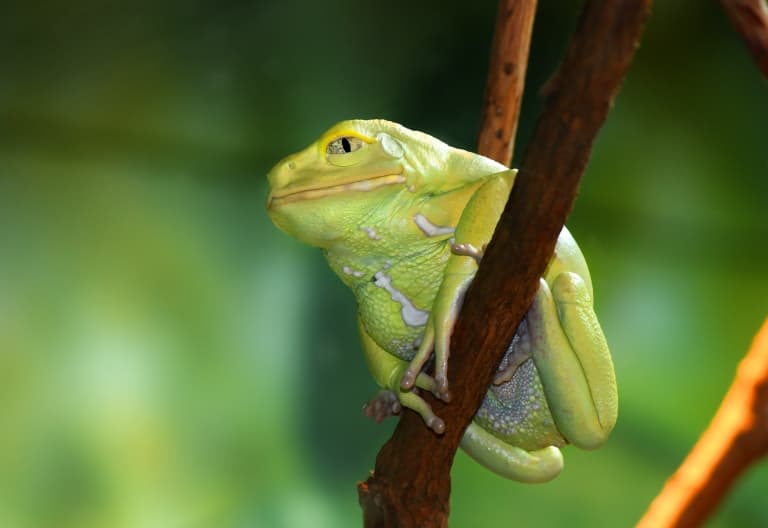
While most frogs are incapable of surviving for long periods under direct sunlight, waxy monkey frogs stay moist by producing and spreading a waxy substance all over its body.
They also produce a secretion that contains dermorphin, a natural opioid that is said to be 40 times stronger than morphine. 4
6. Dyeing Poison Frog
Described as one of the most recognizable frogs on the planet, the dyeing poison frog is known for its distinct yellow and blue pattern. It can grow up to two inches in length and is one of the largest species of poisonous frogs.
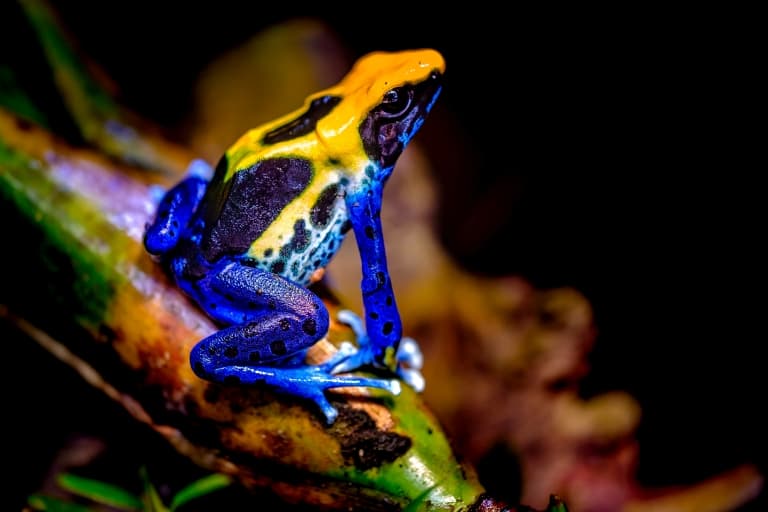
They are more active during the day and have been documented as being quite social animals, often being found wrestling, chasing, and interacting with each other.
Dyeing poison frogs obtain their poison from consuming ants, beetles, and termites. Frogs that are raised in captivity and not fed these insects do not develop the same toxins.
5. Blue Poison Dart Frog
Blue poison dart frogs are bright blue and can sometimes have small black spots scattered across their skin. They are diurnal and are frequently seen hiding between rocks near streams.
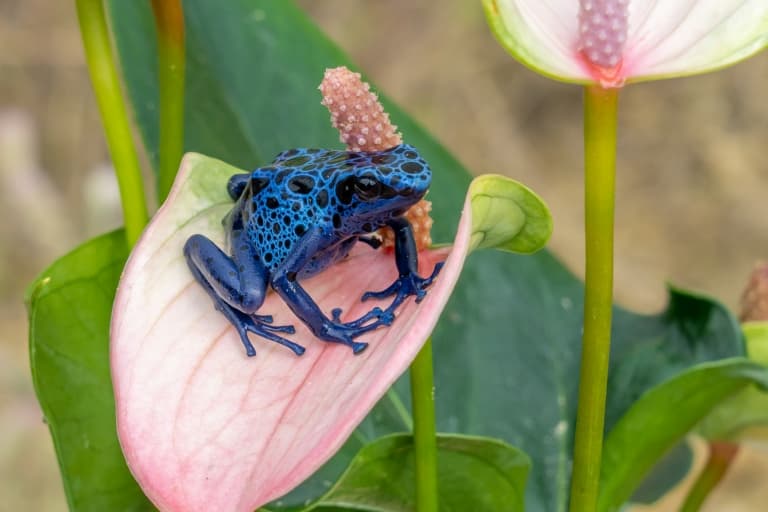
Unlike other frogs, they do not have webbing between their toes, making them subpar swimmers.
In the wild, they can live to be about 10 to 15 years old. However, when kept in captivity, they can survive up to their mid-twenties.
4. Kokoe Poison Dart Frog
Kokoe poison dart frogs are one of the most lethal species of poison dart frogs. Their toxins target ion channels on nerve and muscle cells which can drive rapid paralysis and often death.
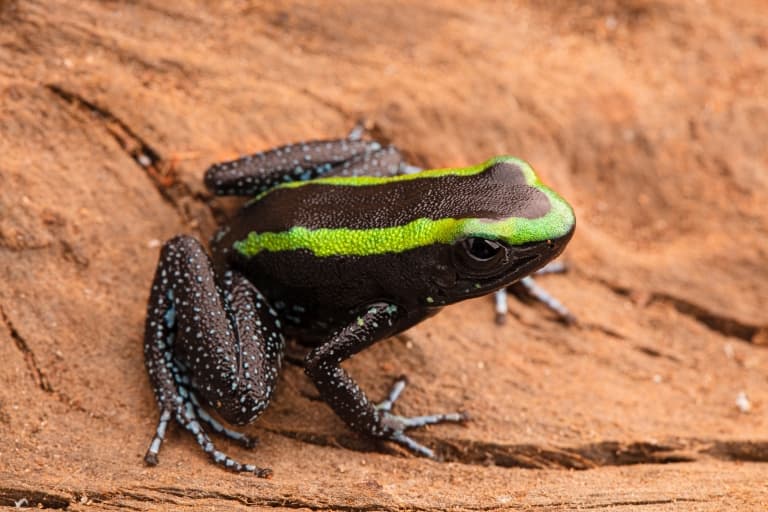
This species is the smallest species of frog in the Phyllobates genus. The majority of their bodies are black which can make them difficult to spot in the darker parts of the tropical rainforests where they reside.
Like the dyeing poison frog, Kokoe’s are highly social frogs. They prefer cooler temperatures and can make bird-like calls to call out to their mates.
3. Variable Poison Frog
Measuring between 0.6 to 0.7 inches in length, the variable poison frog is small enough to be included in a group of species called thumbnail frogs.
They are usually black in color with small spots at the tip of their noses.

Males produce loud calls to attract and court females. Two to six eggs will be laid in pools of water which are then fertilized by males.
These frogs store their poison just beneath the surface of their skin.
2. Black-legged Poison Dart Frog
Black-legged poison dart frogs have yellow or orange bodies and darker colored legs. When young, they possess stripes that disappear as they age.
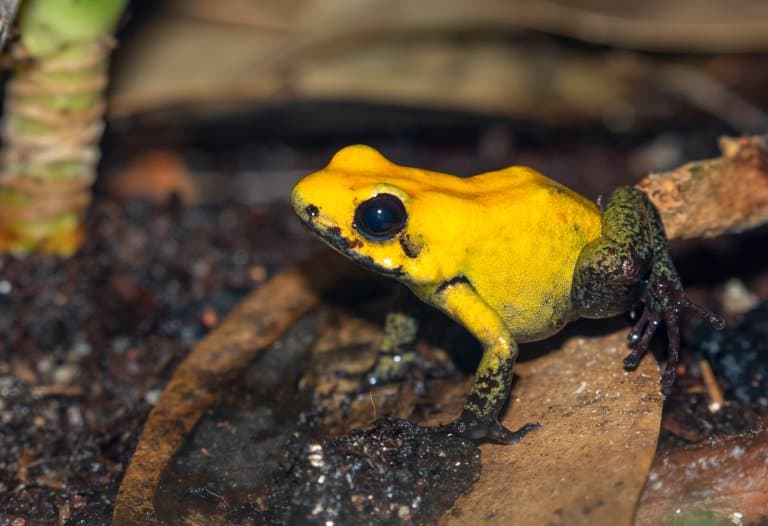
They live in the tropical rainforests of Columbia which are currently affected by human threats such as habitat destruction, agriculture, and human settlement.
The poison of the black-legged poison dart frog is one of the few that have been reported to be used by humans to arm darts and arrows.
1. Golden Poison Frog
The golden poison frog is considered by many to be, not only the most poisonous frog, but the most toxic animal on Earth.
A single animal has been reported to have enough poison to kill ten adults.
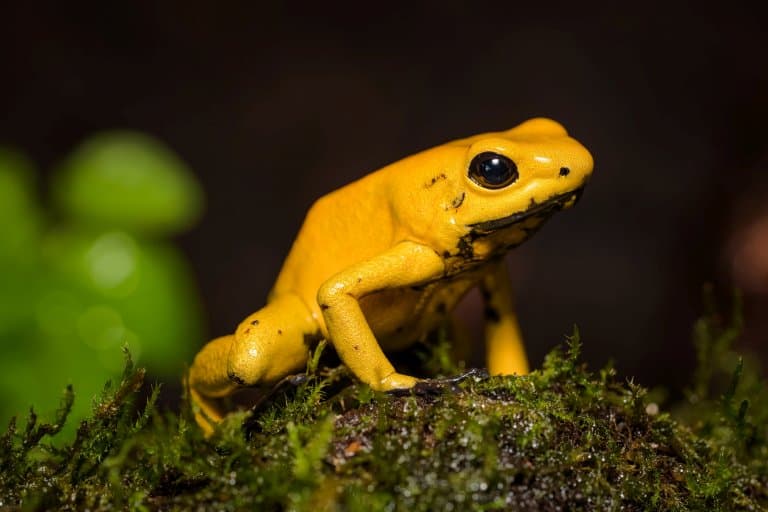
Found on the Pacific coast of Colombia, these fearsome frogs consume a diet composed of flies, crickets, ants, and beetles. They absorb plant poisons that are carried by their prey. Due to its unique properties, the golden frog’s poison is currently being studied for possible medicinal properties.
A group of golden poison frogs is called an army. 5 6
Final Thoughts
That completes our list of the 10 most poisonous frogs in the world.
Frogs are an important part of their ecosystems. They help to control insect populations and contribute to the equilibrium of their habitats.
Studying the poisons produced by different frog species not only deepens our understanding of the other animals that inhabit our planet, but holds exciting possibilities for pharmaceutical discoveries and applications.
By understanding their behaviors, we can ensure their existence and continue to appreciate their beauty.
Fact Sources & References
- Scott Dutfield (2021), “Poison dart frogs: Facts about the beautiful but deadly amphibians“, Live Science.
- “Strawberry Poison Dart Frog“, Henery Vilas Zoo.
- “Green and Black Poison Dart Frog“, Zoo New England.
- “Stranger Things: Meet the waxy monkey tree frog“, WWF.
- “Golden Poison Frog“, National Geographic.
- Eric Niiler (2014), “Just touching this beautiful frog can be deadly“, The Washington Post.
